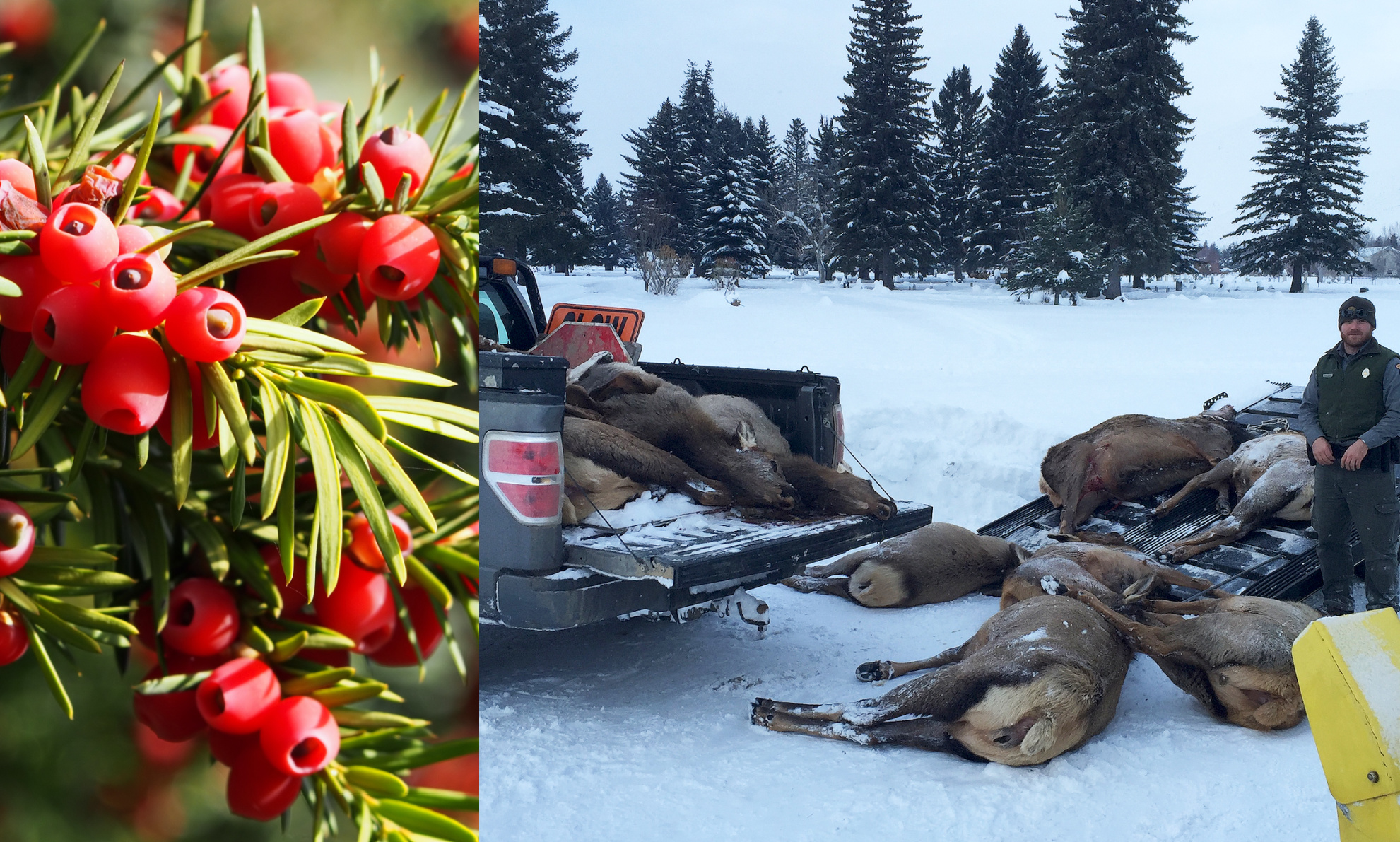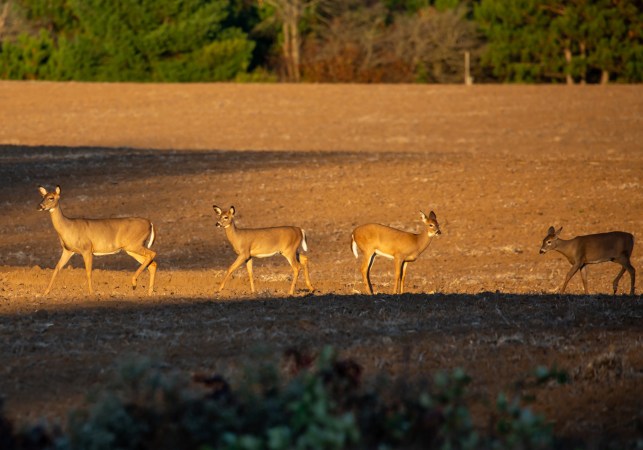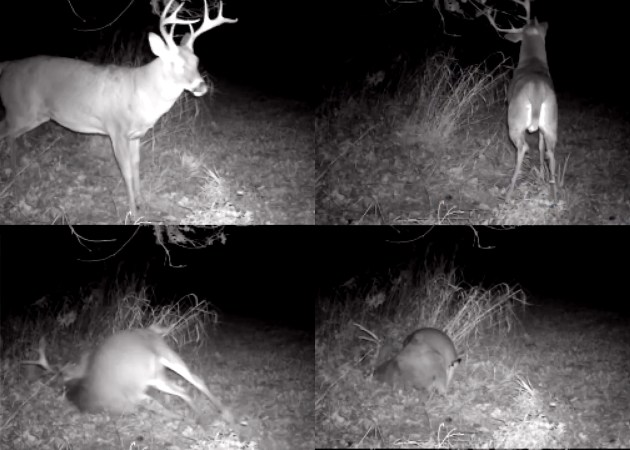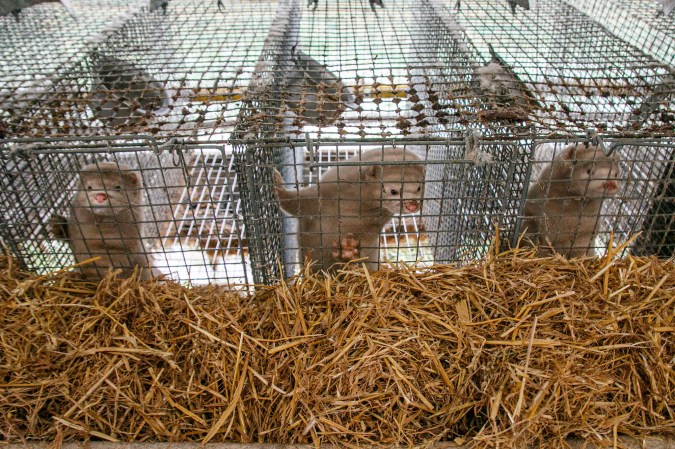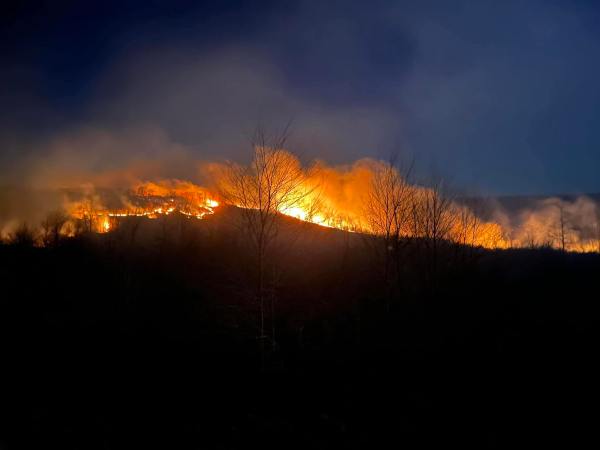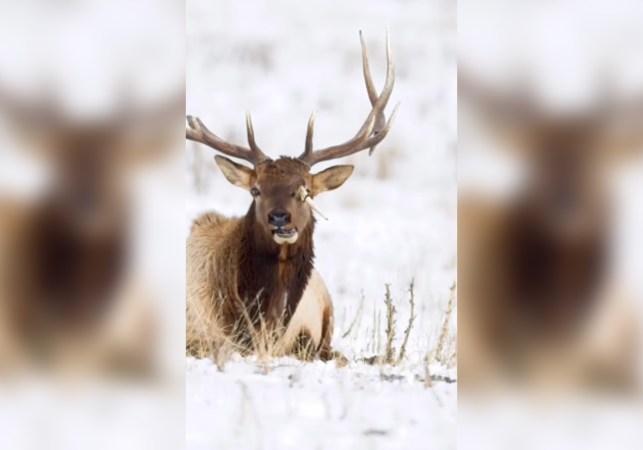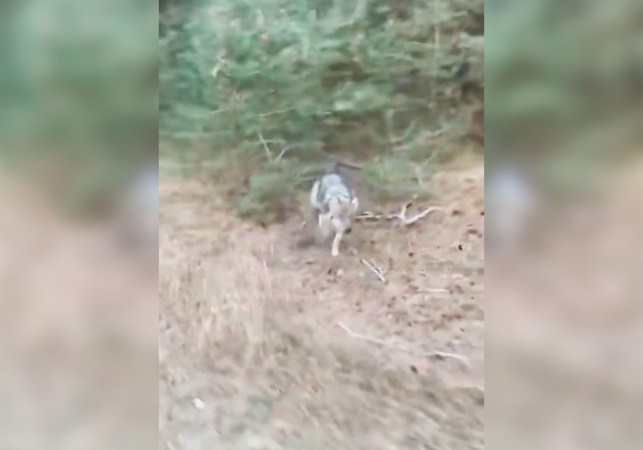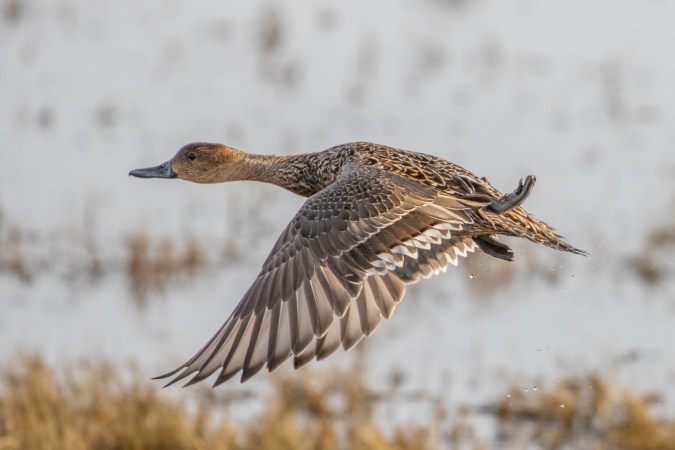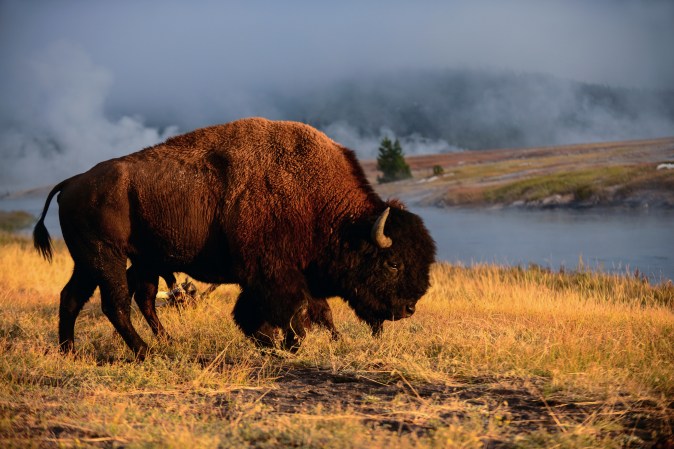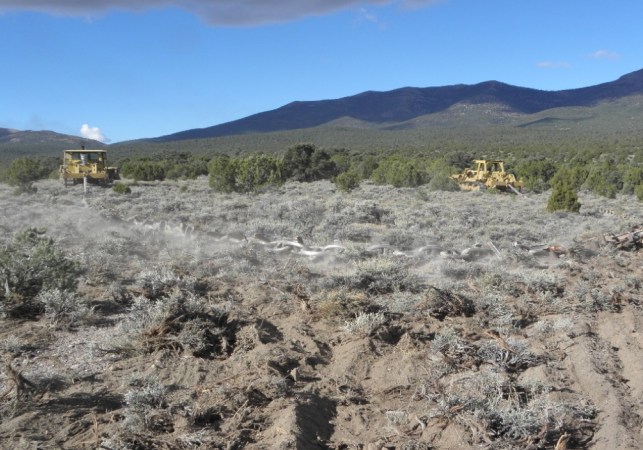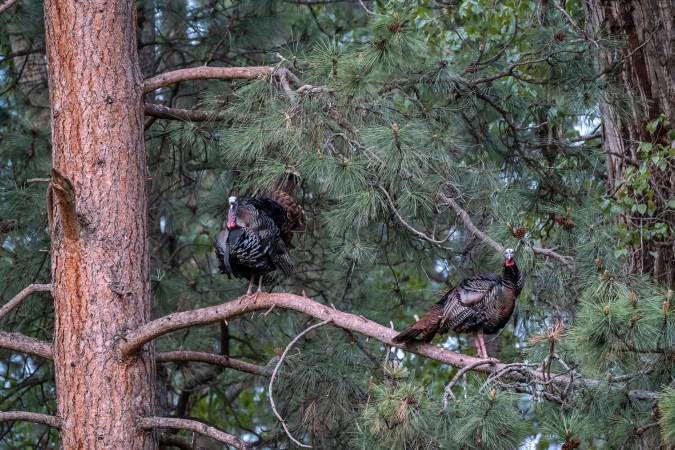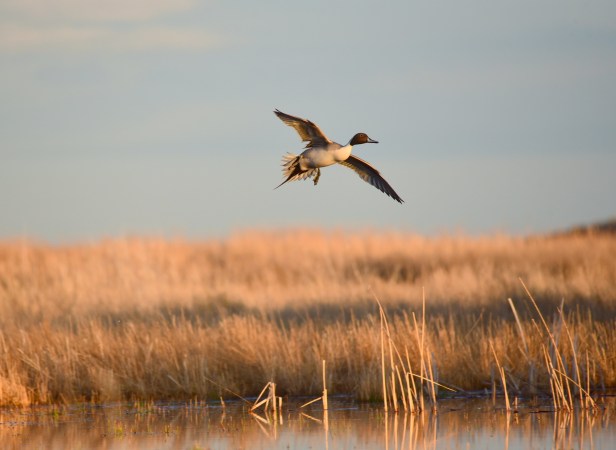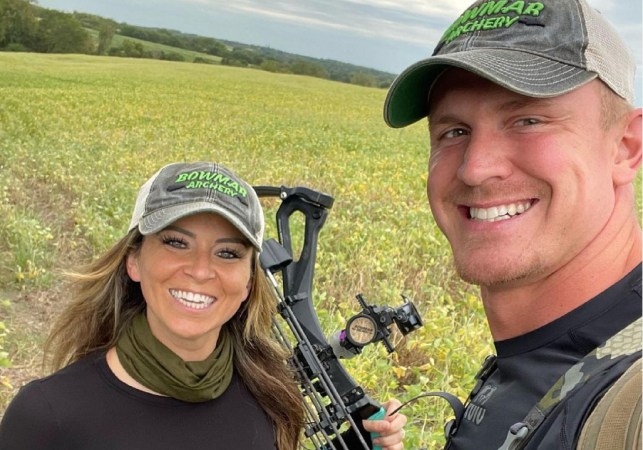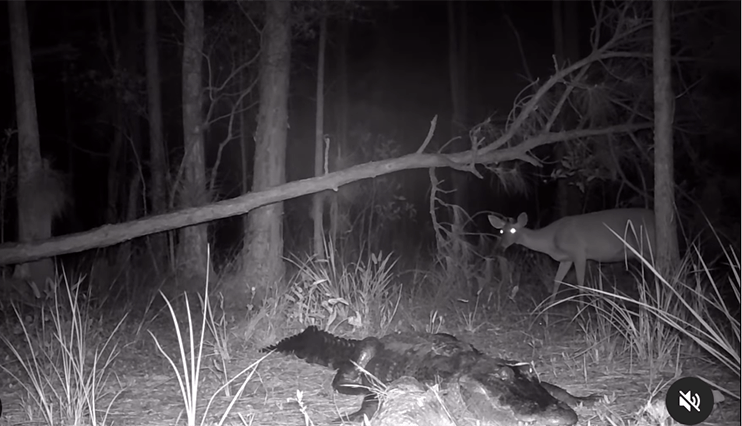On Feb. 3, the Idaho Department of Fish and Game reported two elk calves had dropped dead in the Warm Springs part of Ketchum, Idaho. They join 19 other elk from Mapleton, Utah as the latest victims of yew ingestion. Yew is a poisonous conifer tree—technically, a whole family of them—that is quite popular in ornamental landscaping. Various municipalities near Ketchum have banned some varieties in recent years after hundreds of elk and pronghorn have succumbed to its fast-acting toxins.
Yew ingestion has been a major issue for wildlife in Idaho for years. In January 2017, 55 pronghorn died in Payette from Japanese yew poisoning. Eight elk died in Boise just a few weeks before then. When winter weather drives wildlife to lower elevations near populated areas and excessive snow limits available forage, critters turn to evergreens that still offer food at a reachable height.
But yew trees with their small, cocktail olive-shaped red cones, which more closely resemble berries, wreak havoc quickly.
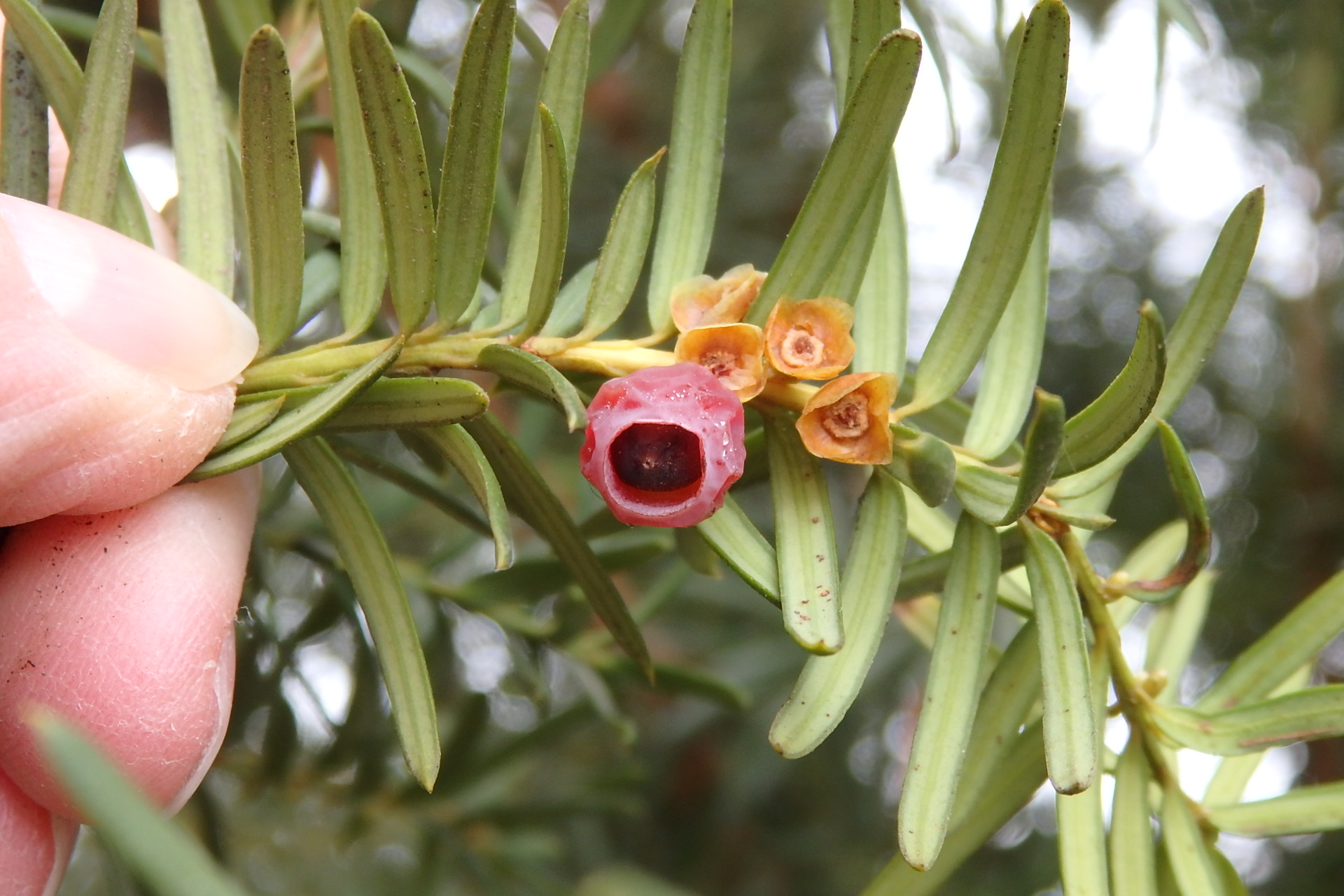
“We had people last year that looked out their window and saw an elk standing in their driveway, then they went to do something else in the house, then looked back out and the elk was tipped over dead,” IDFG regional communications manager Terry Thompson tells Outdoor Life. “It happens fast and there’s no antidote.”
The fate is so dramatic and tragic that it begs a few questions. What is yew, why does it still exist around the region, and why is it so deadly to wildlife?
What Is Yew?
The name “yew” covers a wide variety of trees and shrubs. According to the American Conifer Society, they can grow anywhere from three to 120 feet tall and their trunks can reach up to 12 feet in diameter. They can be short and bushy or more lofty and sparse, depending on the species. Most yews have red bark and springy wood that’s been extremely popular for longbows for centuries.
In fact, William Shakespeare dubbed yew “double-fatal” in his play “Richard II” because of its poisonous qualities and its usefulness for bows, IDFG lead botanist Lynn Kinter tells Outdoor Life. The historic references don’t stop there.
“In 55 B.C., Julius Caesar wrote a book called Commentary on the Gallic Wars. He described a king being overrun in battle, and rather than being killed by the enemy, the king drank yew extract to commit suicide,” Kinter says. “Three of Shakespeare’s plays talk about yew being poisonous. In ‘Macbeth’ when he says ‘double, double, toil and trouble, fire burn and cauldron bubble’? Well further down in that verse, he talks about ‘gall of goat and slips of yew’.”
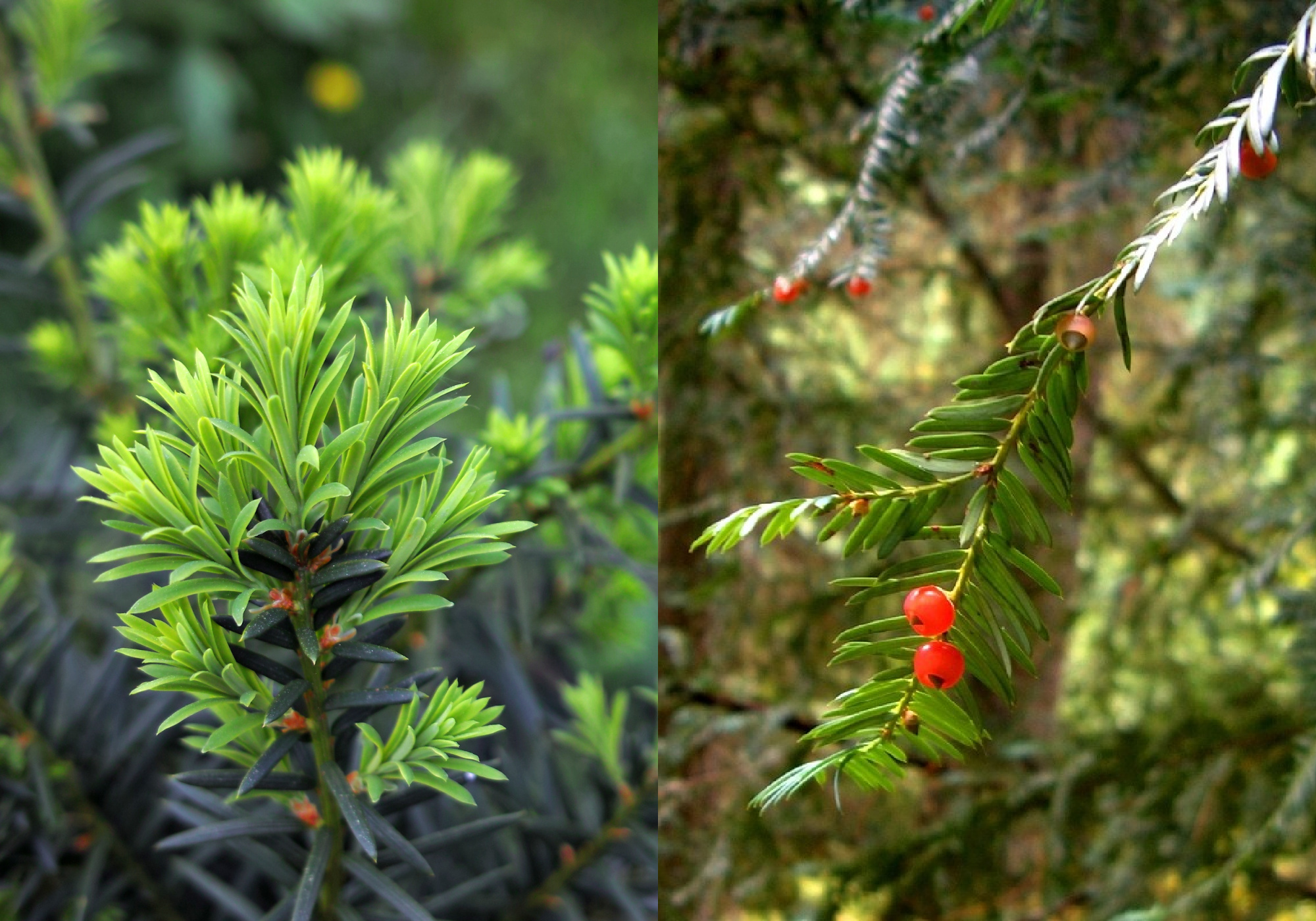
A few yew varieties are native to North America, and those species are less toxic than exotic ones. These include the Pacific, or western yew, and the Canada yew. But in population centers, exotic varietals like Japanese and European yew are far more popular for ornamental landscaping. They’re also way more deadly to anyone who takes a bite.
How Does Yew Kill Wildlife?
Last year, Idaho’s Wood River Valley saw a massive elk die-off at the hands of the conifer.
“We actually quit counting at about 20, because it wasn’t about a body count, it was about determining what was killing so many elk,” Thompson, who works from the IDFG Magic Valley regional office, says. “Yew has been killing wildlife in Idaho for many years. This is not an issue that’s unique to the Wood River Valley, and it is not specific to wildlife. It will kill anything that eats it. Pets, wildlife, people…it’s extremely toxic and it happens very fast.”
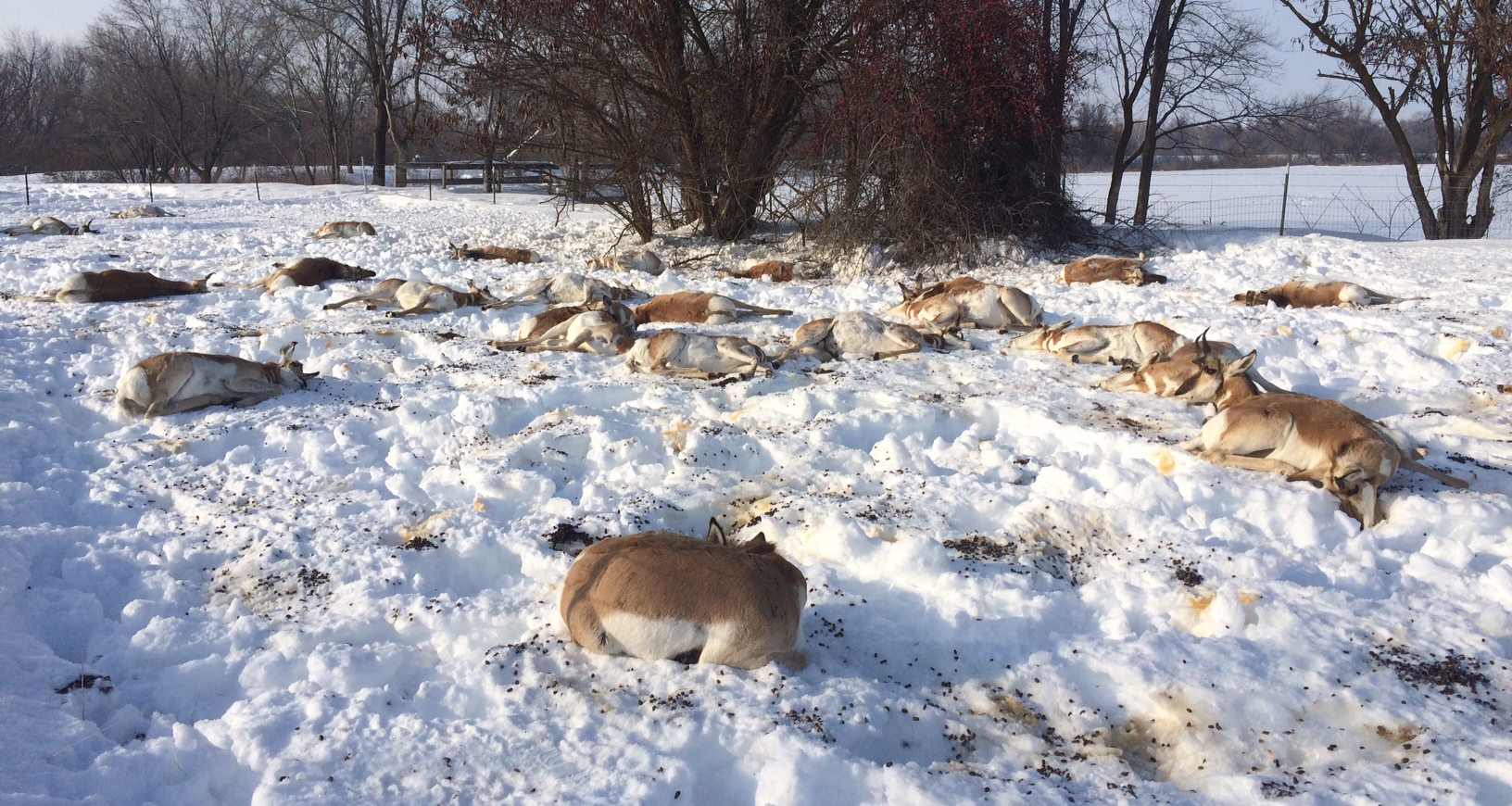
All parts of the yew tree contain alkaloids. These are organic compounds that occur naturally in plants and have physiological and psychological effects on humans and animals. Morphine is an alkaloid. So is the nicotine in cigarettes, the caffeine in coffee, and the quinine in a gin and tonic. The alkaloids in yew are called “taxines,” and they’re toxic to the cardiovascular system.
“Toxic alkaloids cause breathing difficulties and then heart failure. It actually acts on various channels within the cells of the heart,” Kinter explains. “It doesn’t take very much. Less than 1 percent of the bodyweight can cause death. For a small elk, that would translate to about a cup of leaves, or 50 grams.”
Can You Prevent Yew Poisoning?
One of the trickiest parts of preventing yew poisoning in wildlife is catching it before it becomes fatal.
“In wildlife, the first symptom of yew poisoning is usually death,” Kinter says.
When IDFG gets a report of dead elk, biologists first look at body condition, wildlife health program coordinator Stacey Dewaulter tells Outdoor Life. If the animal seems otherwise healthy, a necropsy often reveals yew in the digestive system.
“We’re really concerned when we see animals in pretty good body condition that are found dead. We tend to think ‘what’s killed them quickly?'” Dewaulter says. “Typically, if it’s near neighborhoods or houses with ornamental plants, our biologists will cut them open to see if there’s yew in the digestive tract. The animals usually die quick enough that the yew is not digested and it’s easily identifiable.”
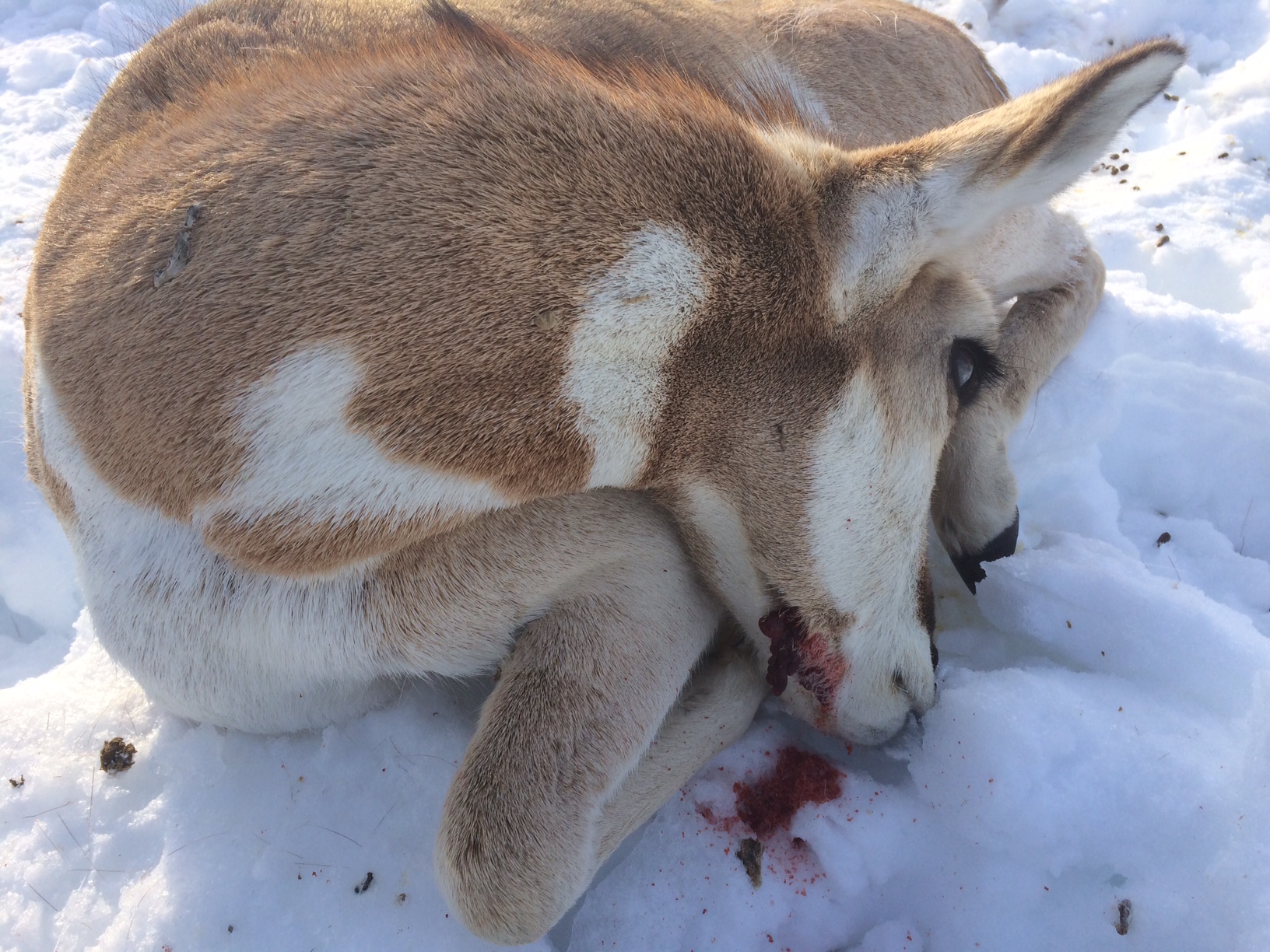
The one easy part of diagnosing a yew death is that the victim can’t get far from the source before expiring.
“Once you start finding animals that died from it, the yew is typically in very close proximity,” Thompson says. “We’ve had situations where animals died in the cemeteries where they found the yew. Usually their gut is full of yew but there’s also yew needles in their mouth, in their esophagus, so it’s pretty fast-acting.”
Why Is Yew So Popular?
The tree has been a heavy hitter in the horticulture sphere for about a century, Kinter says.
“They’re a medium-water-use species, they’re cold tolerant, they can survive the heat in the summer, they can grow in a variety of soils, so they’re really versatile in terms of where they can go,” Kintner explains. “They’re also easy to prune, you can go chop on them at any time of year and they do fine. They look good, and there are lots of different varieties. You can get small ones, tall ones, from compact shrubs to fairly tall trees.”
What’s The Solution?
The city of Ketchum and Blaine County are leading the charge on educating the public about the dangers of growing ornamental yew. But according to Thompson, they still have a long way to go.
“When we put this stuff out on social media, people say ‘why do people continue to bring it in?’ But [most of] the plants we’re finding are mature, so they’ve been in the ground for a long time,” he says. “We did find some new plantings, so there is still an educational component that landscape companies and homeowners need to understand so that they’re not going to another community outside of Blaine County, buying the yew, and bringing it back.”
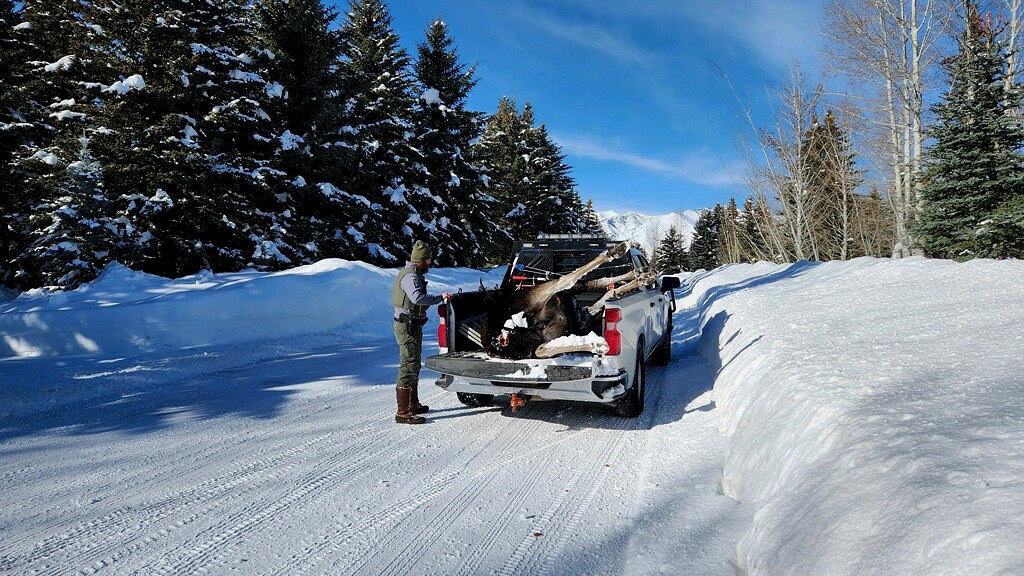
While the yew trees themselves are the most obvious culprit, Thompson explains the problem results from multiple compounding factors.
“We have large elk and deer populations that are resident, they are not migrating in and out of the valley. We have a larger population base than we’ve had, which is building out on traditional winter range. Our elk herd that lives between Hailey and Ketchum never leaves private property, and it’s a growing herd because there’s never any hunting pressure,” he says. “So it’s kind of that perfect storm.”

